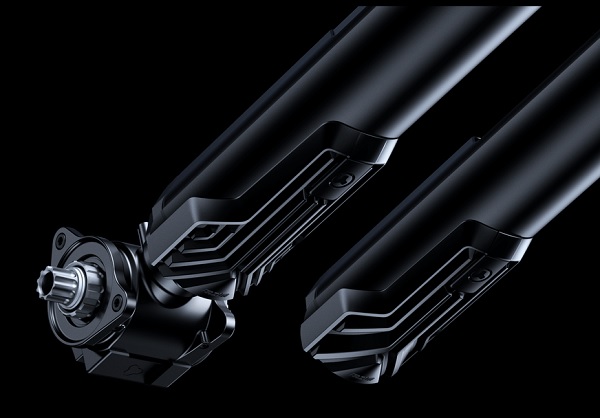
Technical Analysis of the Fazua E-Bike Motor: Architecture, Functionality, and Applications
Technical Analysis of the Fazua E-Bike Motor: Architecture, Functionality, and Applications
The Fazua system stands out in the e-bike motor landscape for its design philosophy focused on lightness, integration, and a pedaling experience that closely resembles that of a traditional non-assisted bicycle. This technical article aims to examine in detail the architecture of the Fazua system, its operating principles, implemented technologies, and its main applications, maintaining an objective and non-commercial approach.
Fazua System Architecture: Evation and Ride 60
Fazua has developed two main platforms: the Evation system (also known as Fazua 50) and the more recent Ride 60. While they exhibit substantial differences in terms of power and torque, they share the philosophy of modularity and lightness.
The Fazua Evation System (Fazua 50)
The Evation system is characterized by a unique architecture that integrates the motor, battery, and gearbox into a single, removable unit, called the "Drivepack."
Drivepack: This modular unit contains the motor, transmission, and battery. It's designed to be easily inserted into or removed from the bicycle frame. When the Drivepack is removed, the bicycle can be used as a normal non-assisted bike, benefiting from the significant weight reduction.
Bottom Bracket Unit: This unit, integrated into the frame, houses the torque and cadence sensors and the mechanism for decoupling the motor from the bicycle's drivetrain. It's the only part of the system that remains fixed in the frame when the Drivepack is removed.
Battery: The battery, typically 250 Wh, is integrated into the Drivepack in the Evation system. This choice contributes to the compactness and ease of removal of the entire propulsion unit.
User Interface: Typically a minimalist control unit integrated into the top tube or handlebar, with LEDs indicating battery level and assistance mode.
The Fazua Ride 60 System
The Ride 60 represents the evolution of the Fazua concept, offering more power and greater integration, while maintaining lightness as a priority.
Motor: The motor, more powerful than the Evation, is fixed inside the frame, typically near the bottom bracket. This allows for better power transfer and more efficient heat dissipation.
Battery: The Ride 60 battery, with a capacity of 430 Wh, is also integrated into the frame but is separate from the motor. While not as easily removable as in the Evation system, it contributes to optimized weight distribution and greater range. An optional range extender is also available.
Sensors: Continues to use torque and cadence sensors for smooth and responsive assistance.
User Interface: Offers more sophisticated options, such as the LED Hub integrated into the top tube or the Ring Control for changing modes.
Operating Principles and Mechanisms of Action
Both Fazua systems are designed to provide pedaling assistance that is as natural as possible, avoiding the sensation of being "pushed" by the motor.
Torque and Cadence Sensors: The heart of Fazua's assistance lies in its torque and cadence sensors. These sensors accurately detect the force applied to the pedals and the rider's pedaling frequency. The motor provides assistance based on these parameters, modulating power in real-time for a smooth and progressive pedaling feel.
Freewheel Technology: A distinctive feature of the Evation system (and partially re-proposed in the Ride 60 with a less intrusive motor) is the "freewheel" technology in the Drivepack. When the motor is not providing assistance (e.g., above 25 km/h or with assistance deactivated), the motor mechanism completely decouples from the bicycle's drivetrain. This eliminates any additional resistance generated by the motor, making pedaling similar to that of a traditional bike. In the Ride 60, despite the motor being fixed, friction minimization is a key principle.
Assistance Modes: Both systems offer various assistance modes (e.g., Breeze, River, Rocket for Evation; Breeze, River, Rocket for Ride 60), which vary in terms of power output and energy consumption. These modes allow the rider to adapt the assistance to their needs and the terrain.
Bluetooth/App Connectivity: Both Fazua systems are equipped with Bluetooth connectivity, allowing interaction with smartphone apps (such as the Fazua App). The app allows users to monitor riding parameters, customize assistance modes, view battery level, and access diagnostic features.
Technical Specifications and Performance
Fazua Evation (Fazua 50)
Nominal Torque: Generally around 50 Nm.
Maximum Power: Up to approximately 300-350 W peak.
Battery: 250 Wh, integrated into the Drivepack.
System Weight (Drivepack + Battery): Approximately 3.3 kg.
Philosophy: Lightweight and compact design, ideal for e-road, e-gravel, and light e-mountain bikes where the priority is discreet assistance and the ability to pedal without resistance when the motor is off.
Fazua Ride 60
Nominal Torque: 60 Nm.
Maximum Power: Up to approximately 450 W peak.
Battery: 430 Wh, integrated into the frame. Optional range extender.
Motor Weight: Approximately 1.96 kg.
Battery Weight: Approximately 2.3 kg.
Philosophy: Greater power and range compared to Evation, while maintaining a low weight for the category. It positions itself between light and full-power motors, suitable for more performance-oriented e-mountain bikes and e-trekking bikes that require more thrust.
Technical Advantages and Applications
Fazua systems stand out for the following technical advantages:
Lightness: They are among the lightest e-bike systems on the market, resulting in bicycles with a lower overall weight, improving handling and ride feel.
Discreet Integration: The compact size of the motor and battery allows bicycle manufacturers to create frames with a cleaner, less bulky design, often indistinguishable from a traditional bike at first glance.
Natural Pedaling Feel: The precise calibration of the sensors and the decoupling technology (in the case of Evation) or friction minimization (in the case of Ride 60) provide fluid assistance that integrates with the rider's pedaling.
Modularity (Evation): The ability to completely remove the Drivepack allows the e-bike to be converted into a traditional bike, useful for training or for use in contexts where assistance is not needed.
App Customization: Bluetooth connectivity and the Fazua app allow users to adapt power delivery characteristics to their preferences.
The main applications of Fazua systems include:
E-Road Bikes: Lightness and discretion are crucial for e-road bikes, where assistance is sought only when necessary.
E-Gravel Bikes: Versatility and the ability to cover long distances with a low weight are ideal for e-gravel.
"Light" E-Mountain Bikes: The Ride 60 is gaining traction in this segment, offering sufficient power for trails without the weight and bulk of more powerful motors.
E-Urban/Trekking Bikes: For cyclists who want discreet assistance for daily commutes or light bike touring.
Concluding Remarks
The Fazua motor, in its Evation and Ride 60 evolutions, represents an advanced engineering solution for e-bikes that prioritize lightness, aesthetic integration, and a natural pedaling feel. Its modular architecture (in Evation) and assistance calibration make it particularly suitable for market segments looking for a less "invasive" e-bike that is more similar to a traditional bicycle. The evolution from Fazua 50 to Ride 60 demonstrates a progression towards greater power and integration, while maintaining the brand's fundamental principles. The choice of the Fazua system by bicycle manufacturers underscores a market trend towards more agile and performance-oriented e-bikes, with a particular focus on the overall riding experience.
